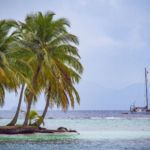Bristol was the first British city to be named European Green Capital. This award celebrates and promotes innovative responses to urban environmental challenges.
The city influenced international policy at the UN climate change summit in Paris in 2015, sharing best practices and presenting ambitious sustainable action.
Bristol was named European Green Capital in 2015 – the first UK city to be awarded this prestigious title. Since then it has implemented long term commitments to climate change and to becoming a carbon-neutral city. It was developed as an engagement program for the public and business-led events sharing ideas on sustainability and the environment. Part of that was the host of the first International Fair Trades Town Convention with more than 240 delegates from 20 countries.
A green energy group called Ecotricity, based in nearby Stroud has recently created a group in Bristol with future plans to establish a tech hub.

Why Bristol?
Some of the main key factors were:
- Demonstrate a well-established record of achieving high environmental standards
- Commit to ongoing and ambitious goals for further environmental improvement and sustainable development
- Be a role model – part of an ever-growing group of cities that aim to inspire and promote best practices to all European cities.
Bristol has established as one of the UK’s leading cities for sustainable development and home to prominent environmental and ethical organizations such as the Triodos Bank and Sustrans, and Soil Association. The city was also ranked as the world’s 4th most inspirational city.

The city provides many opportunities for people to get involved and make a difference, to protect the environment by learning more about sustainability, joining a campaign, or making small changes to your lifestyle, with eye-opening tours and talks year-round.
The city also hosts the leading FairTrade city in the UK, community food growing movement, Incredible Edible, Wildscreen Festival – the world’s largest wildlife and environmental film festival. Bristol was the UK’s first cycling city and home to the National Cycle Network and Sustrans, the UK’s sustainable transport charity. Many festivals and events, from Big Green Week to the Festival of Nature and the annual Walking Festival, celebrate the city’s commitment to sustainability.
The primary focus of the city is five themes: energy, food, nature, resources, and transport in order to make it a healthier and happier city.
Energy
Bristol Energy, the national gas and electricity company with a reach to over 100,00 customers is helping to tackle the effects of social inequality and fuel poverty, supporting local people with clean renewable energy.
The Green Capital has become a hub for energy companies and groups such as Bristol Community Energy, Bristol Energy Cooperative and Fund and Centre of Sustainable Energy. Bristol’s plan is to reduce carbon dioxide emissions by 80% by 2050.
Bristol Energy, the first energy company in the country to offer 100% green electricity and reinvest its profits back into local communities.

Food
Food and drink is extremely important and many venues pride themselves on offering locally sourced and sustainable menus as well as locally made drinks.

Resources
In 2007, the Bristol Partnership launched the Green Capital initiative in order to invite organizations in the city to play their part in helping tackle climate change and contribute to Bristol’s ambition of becoming a leading UK green capital.
Collections of different types of household waste in Bristol comprise two categories of recyclable waste, food waste, garden waste, and non-recyclable waste. The environmental experts Eunomia and Resource Futures based here are also helping the city with their research.

Nature
Bristol has over 450 beautiful parks and green spaces – more than any other UK city. It’s also surrounded by beautiful countryside with country house hotels, castles, and wildlife attractions.
Transport
Transport by train plays a significant role in sustainable travel. Bristol has two mainline railway stations and trains run every 30 minutes from London, Cardiff, and Birmingham.
Research also found Bristol is among the top ten safest cities in Europe, thanks to a low number of traffic fatalities.
The UK’s first bio bus made his route here. The number of electric vehicles is increasing.
The city’s Transport Plan supported by Bristol Green Capital is focused on expanding local rail and bus services to provide affordable, integrated public transport, particularly as the City grows. Free up the city center and community shopping centers for pedestrians, cyclists and public transport leading to a safer, less polluted city.
Main photo credit: Hello I’m Nik 🇬🇧 on Unsplash
Want to learn more about other sustainable destination? Check out section sustainable travel destinations.













 Photo credit: Tony Calvert / Flickr
Photo credit: Tony Calvert / Flickr Photo credit: Fabrice TRINITE / Flickr
Photo credit: Fabrice TRINITE / Flickr Photo credit: N Blom / Flickr
Photo credit: N Blom / Flickr Photo credit: Andri Elfarsson / Flickr
Photo credit: Andri Elfarsson / Flickr Photo credit: Guitar photographer / shutterstock
Photo credit: Guitar photographer / shutterstock Photo credit: Giuseppe Milo / Flickr
Photo credit: Giuseppe Milo / Flickr Photo credit: imgur.com
Photo credit: imgur.com
